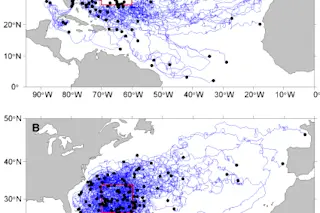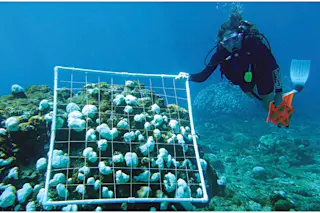Earlier today we reported on scientists at the Woods Hole Oceanographic Institution trying to answer the question, "Where'd all the oil in the Gulf go?" (At least some of it is floating around in giant plumes.) In the same issue of the journal Science released this afternoon, another team from Woods Hole tried to answer another pressing ocean question: "Where'd all the plastic in the Atlantic go?" We're referring to the great patch of plastic in the North Atlantic Gyre. You might have read the stories in DISCOVER and elsewhere about the more famous Great Pacific Garbage Patch, a Texas-sized soup of tiny plastic pieces in the middle of that ocean. Circulating ocean currents create these gyres in several places around the world, and ocean-borne plastic gets trapped. The Woods Hole paper is the result of a two-decade study of the Atlantic patch that produced a surprising result: The amount ...
The Mystery of the Missing Plastic in the Atlantic Garbage Patch
Discover the shocking findings about plastic in the Atlantic, revealing insights into its mysterious distribution and impact on marine life.
More on Discover
Stay Curious
SubscribeTo The Magazine
Save up to 40% off the cover price when you subscribe to Discover magazine.
Subscribe













